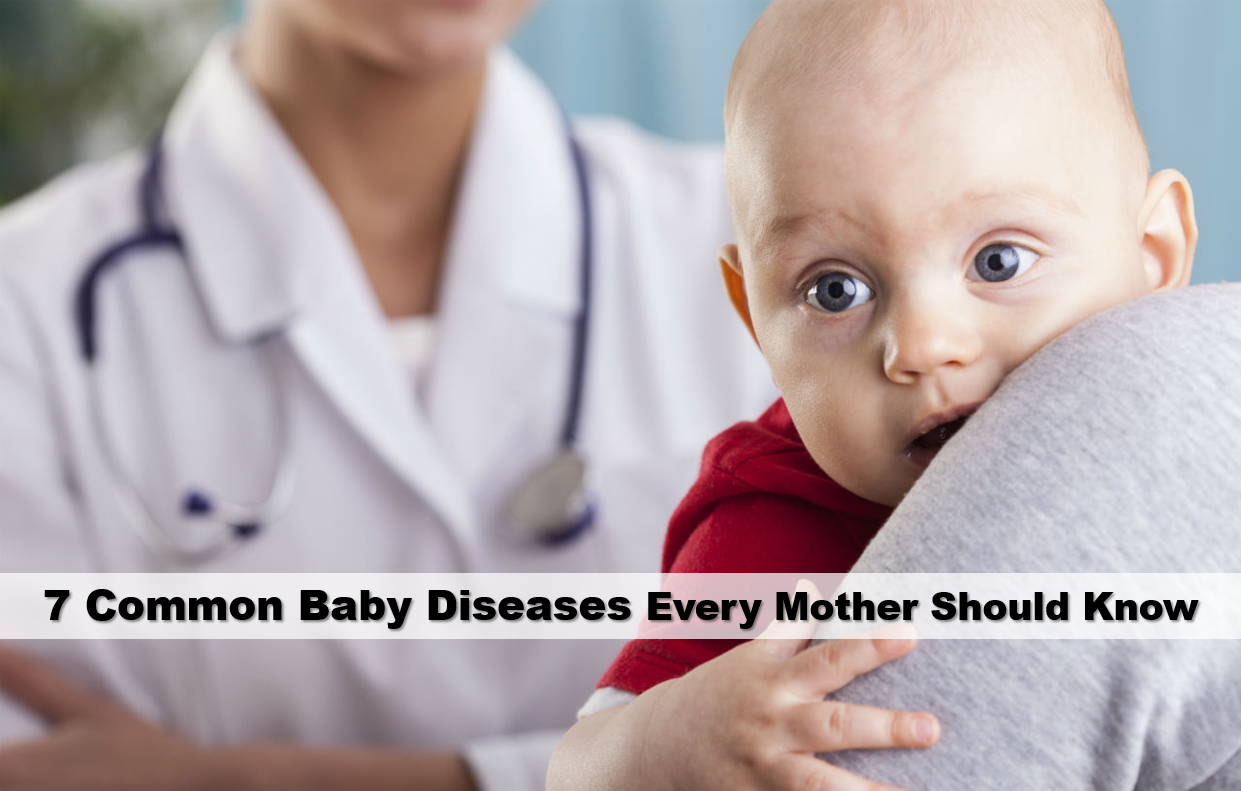7 Common Baby Diseases Every Mother Should Know

What are the common baby diseases? Healthy and happy development of the baby is the priority of every parent. Therefore, parents who pay attention to everything should not forget that the infants’ immune system is weak and develops over time. To improve the immune system, breast milk, adequate nutritional values in supplementary food, and regular sleep are essential during the period. Despite this, you can witness different diseases of your baby. Here, we will list the seven common baby (infant) diseases that every mother should know.
7 Common Baby Diseases
Especially in infancy, it is necessary to be more careful about the common diseases. For this reason, knowing the common infant diseases and taking precautions will help your babies’ development and health.
#1) Oral Thrush
White layer formation in the baby’s mouth is called oral thrush. This condition, which occurs frequently in newborn babies, can be seen until one year of age. These thrushes are similar to fungal cases in adults. Thrush also is a symptom of infections in the baby’s airways and digestive tract. Although thrush is not a very serious disease, it affects the feeding habits of the baby and may cause the baby to become restless. Therefore, it is a condition that requires physician control without being neglected.
#2) Cradle Cap
Dry white or yellow scales form a shell on the scalp. It may also spread to the eyebrows. In addition to allergy in the infant, the genetic causes and the malnutrition of the mother are among the main causes of cradle cap. A baby with a cradle cap should be bathed frequently. If there is a scent on the top of the baby’s head due to this disease, bathing can be done after mixing carbonate and olive oil and rubbing it on the child’s head. However, if the disease is not treated, you should consult a doctor.
#3) Jaundice
This disease, which occurs in 60% of newborn babies and 80% of premature babies, is not in the category of dangerous diseases unless it progresses. In the womb, bilirubin needs to be removed from the body, and the lungs of some babies are inadequate for this procedure. The name of the disease is jaundice because the body color and the white part of the eyes turn into a yellow color.

#4) Chickenpox
Chickenpox is common in infants with small and red blisters and severe itching. Symptoms of chickenpox in infants are a weakness, diarrhea, and skin rash. In the following days, skin rashes turn into wounds. Chickenpox, known as a baby disease, is not as difficult as in adults, but doctor intervention is necessary. Speckles on babies’ body may disturb them during the treatment process. If the sores cause severe itching and disturb the baby too much, the body can be gently wiped with a damp cloth.
#5) Measles
Measles is an infectious disease that needs to be taken seriously. It is rarely seen in babies before six months because the antibodies taken from the mother protects the baby against measles. However, infants and children are quite suitable for measles virus in the future. Approximately ten days after the virus enters the body begins to show symptoms. Fever, watery eyes and redness, white spots in the mouth, cough, and skin rashes in the following days are among the most common symptoms of measles. Measles, in the later stages of, cause some serious diseases such as brain inflammation and pneumonia, it is necessary to consult a doctor when you observe any symptoms. For detailed information about measles, look at “Measles Treatment and Symptoms“.
#6) Meningitis
Meningitis is an inflammation of the brain or spinal cord. Meningitis is common in infants under two years of age. However, it may also occur in children who have not been vaccinated. Meningitis, which is more dangerous than other diseases, may cause brain damage and vision or hearing impairment in later stages. The weak immune system may not be able to fight the bacteria emitted by this disease. For this, strengthening the immune system is the best way to prevent this disease. Severe and persistent headache, high fever, fatigue, and loss of consciousness are among the symptoms of meningitis. You should take these symptoms seriously and take your baby to the doctor. To learn more about meningitis in babies, check “What is Meningitis? (Symptoms of Meningitis)”
#7) Croup
One of the most common diseases in winter is the croup. Symptoms of croup are inflammation of vocal cords and trachea, fever, runny nose, cough, and hoarse voice. You can notice the tone when your baby cries. The reason for this disease, especially in infants, is that the airways are still very narrow. As the baby gets older, the chance of developing this disease decreases. During the treatment of this disease, which requires a doctor’s supervision, make sure that the house is ventilated, and your baby is consuming enough liquid.





